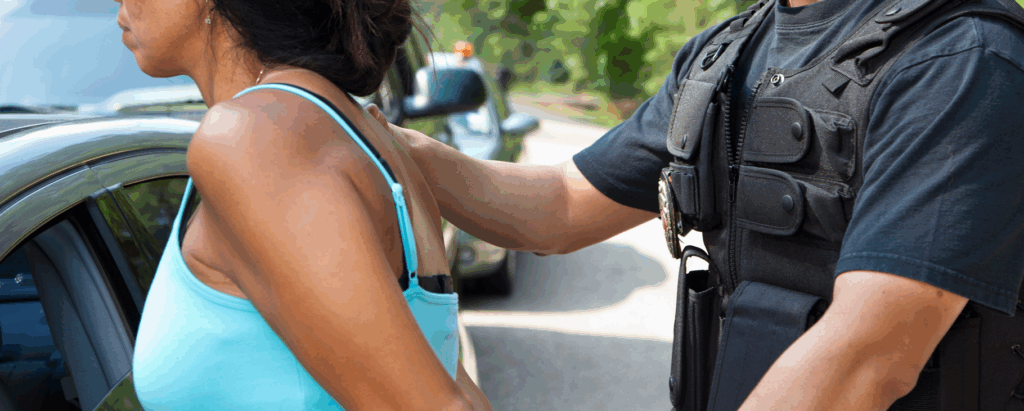Eastep v. City of Nashville, 2025 WL 2945581 (6th Cir. 2025)
Landon Eastep was walking along the shoulder of a Nashville interstate. Tennessee State Trooper Reggie Edge Jr. saw Eastep and approached him, intending to pat him down and offer him a ride off the freeway. When Trooper Edge asked whether Eastep had anything that would “poke” or “harm” him, Eastep produced a box cutter from his pocket, briefly held it up, then began to trot away before turning back toward Trooper Edge. Trooper Edge ordered Eastep to drop “the weapon” and get down on the ground.
An off-duty officer who was driving by noticed Trooper Edge and Eastep and stopped to assist. Both officers tried to persuade Eastep to put down the blade. Eastep did not, and he reached toward his pocket several times. Trooper Edge had not completed his frisk and was concerned about Eastep’s behavior.
Before long, personnel on scene included 10 officers from the Tennessee Highway Patrol and the Metropolitan Nashville Police Department. Several officers asked Eastep to drop his weapon. Trooper Edge informed the other officers Eastep could have more weapons on him. He also told them Eastep appeared to have something in his pocket. The officers asked Eastep whether he had another weapon and why he was reaching into his pocket. Eastep continued pacing around the shoulder of the highway, never responding to commands to drop the box cutter.
After about 35 minutes, Eastep took two quick steps toward the officers as he pulled an electronic vape device from his pocket, pointing it at them in a movement consistent with drawing and aiming a gun. Nine officers fired approximately 33 shots, 12 of which struck Eastep. Two officers called for a ceasefire. After Eastep had already fallen to the ground, one officer fired two additional shots. Eastep did not survive the encounter.
Timely legal analysis on law enforcement-related cases: SUBSCRIBE NOW!
Eastep’s wife filed suit against the officers, alleging excessive force. The officers moved to dismiss the complaint on the basis of qualified immunity. The trial court denied the motions. The trial court ruled that, viewing the evidence in the light most favorable to the plaintiff (as is required when considering a motion for summary judgment based on a claim of qualified immunity), it was plausible some or all officers fired their weapons after Eastep was no longer a threat. The officers appealed.
The U.S. Supreme Court prescribes a two-step test to assess whether an officer is entitled to qualified immunity. The court must consider “(1) whether the facts, when taken in the light most favorable to the party asserting the injury, show the officer’s conduct violated a constitutional right; and (2) whether the right violated was clearly established such that a reasonable official would understand that what he is doing violates that right” (Saucier v. Katz, 533 U.S. 194 (2001)).
To determine whether the trial court improperly denied qualified immunity, the appellate court began by applying the Graham factors. In Graham v. Connor (490 U.S. 386 (1989)), the court instructed lower courts to always ask three questions to measure the constitutionality of a particular use of force:
- What was the severity of the crime the officer believed the suspect to have committed or to be committing?
- Did the suspect present an immediate threat to the safety of officers or the public?
- Was the suspect actively resisting arrest or attempting to escape?
The Supreme Court also stated that the use of force should be measured by what the officer knew at the scene.
“The Supreme Court prescribes a two-step test to assess whether an officer is entitled to qualified immunity.”
The first factor weighed against the officers. Eastep was committing a low-grade misdemeanor by walking on the shoulder of an interstate highway. In contrast, the second factor was clearly in the officers’ favor. Citing the video evidence, the court stated, “Eastep: (1) consistently and repeatedly disobeyed the officers’ commands to drop his weapon; (2) took two steps towards them; (3) quickly removed an object from his jacket pocket; and (4) using both hands, from a shoulder-level position, pointed the object at officers. Taken together, these actions evince a reasonable perception of an immediate threat.” The appellate court held that, “recognizing the split-second judgments that the eight officers had to make under the circumstances here, the plaintiff has not sufficiently alleged a constitutional violation for these officers.”
The third factor also tipped toward the officers’ favor. “Virtually from the outset of the encounter, Eastep refused to comply with the officers’ requests for him to drop his weapon and rejected their efforts to get him off the freeway. He had already tried to evade Trooper Edge by pulling away from him, nearly stepping into a traffic lane, and jogging further up the freeway shoulder.” The court stated the lack of compliance alone did not satisfy the factor examining whether Eastep was actively resisting or evading arrest. Noncompliance alone could not justify the use of force. However, Eastep went further by drawing an object that could be perceived as a gun, mimicking a shooting stance as he “aimed” it at the officers.
The officer who fired the final two shots three seconds after Eastep was on the ground and immobile was subject to the same analysis of the first and second Graham factors. However, the appellate court held the plaintiff alleged facts sufficient to support a plausible claim that the final two shots were objectively unreasonable. The court characterized those shots as “gratuitous force, indeed lethal force, initiated after the threat was neutralized, and the individual was incapacitated.” The court affirmed the denial of qualified immunity to the officer firing the last two shots and reversed the denial of qualified immunity for the others, effectively ending the lawsuit against them.
Several critical questions were not addressed by the court. Perhaps no one asked them. It may also be that the appropriate time to raise them publicly will come at trial. For example, we don’t know what the officer firing the final two shots perceived at the moment he made the decision to fire. We do know that it takes time to start firing and it takes time to stop firing. A skilled investigator will conduct a reverse-OODA loop analysis. There is an excellent discussion this phenomenon in Sgt. Jamie Borden’s masterful text, “Anatomy of a Critical Incident: Investigations and Analysis.” I highly recommend every detective responsible for any use of force investigation, whether by an officer or other, read the book cover to cover (I issue a copy to every one of the dozen detectives on our Officer Involved Critical Incident investigation team). Depending on whether there is ever a trial following this appeal, perhaps we’ll never know precisely what happened. But when investigating deadly force, we ought to demand the most thorough investigations that don’t leave vital questions unanswered.
- Blog Articles



